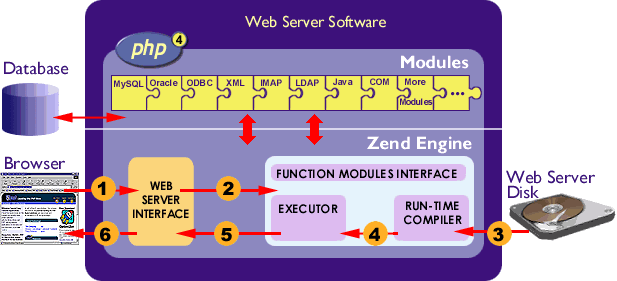| П | О | Р | Т | А | Л | ||||||||||||||
| С | Е | Т | Е | В | Ы | Х | |||||||||||||
| П | Р | О | Е | К | Т | О | В |
Поиск по сайту: Главная О проекте Web-мастеру HTML & JavaScript SSI Perl PHP XML & XSLT Unix Shell MySQL Безопасность Хостинг Другое
|
Overview"Extending PHP" is easier said than done. PHP has evolved to a full-fledged tool consisting of a few megabytes of source code, and to hack a system like this quite a few things have to be learned and considered. When structuring this chapter, we finally decided on the "learn by doing" approach. This is not the most scientific and professional approach, but the method that's the most fun and gives the best end results. In the following sections, you'll learn quickly how to get the most basic extensions to work almost instantly. After that, you'll learn about Zend's advanced API functionality. The alternative would have been to try to impart the functionality, design, tips, tricks, etc. as a whole, all at once, thus giving a complete look at the big picture before doing anything practical. Although this is the "better" method, as no dirty hacks have to be made, it can be very frustrating as well as energy- and time-consuming, which is why we've decided on the direct approach. Note that even though this chapter tries to impart as much knowledge as possible about the inner workings of PHP, it's impossible to really give a complete guide to extending PHP that works 100% of the time in all cases. PHP is such a huge and complex package that its inner workings can only be understood if you make yourself familiar with it by practicing, so we encourage you to work with the source. What Is Zend? and What Is PHP?The name Zend refers to the language engine, PHP's core. The term PHP refers to the complete system as it appears from the outside. This might sound a bit confusing at first, but it's not that complicated (see Рис. 46-1). To implement a Web script interpreter, you need three parts:
The following sections discuss where PHP can be extended and how it's done.
Если Вы не нашли что искали, то рекомендую воспользоваться поиском по сайту: |
||||||||||||||||||
